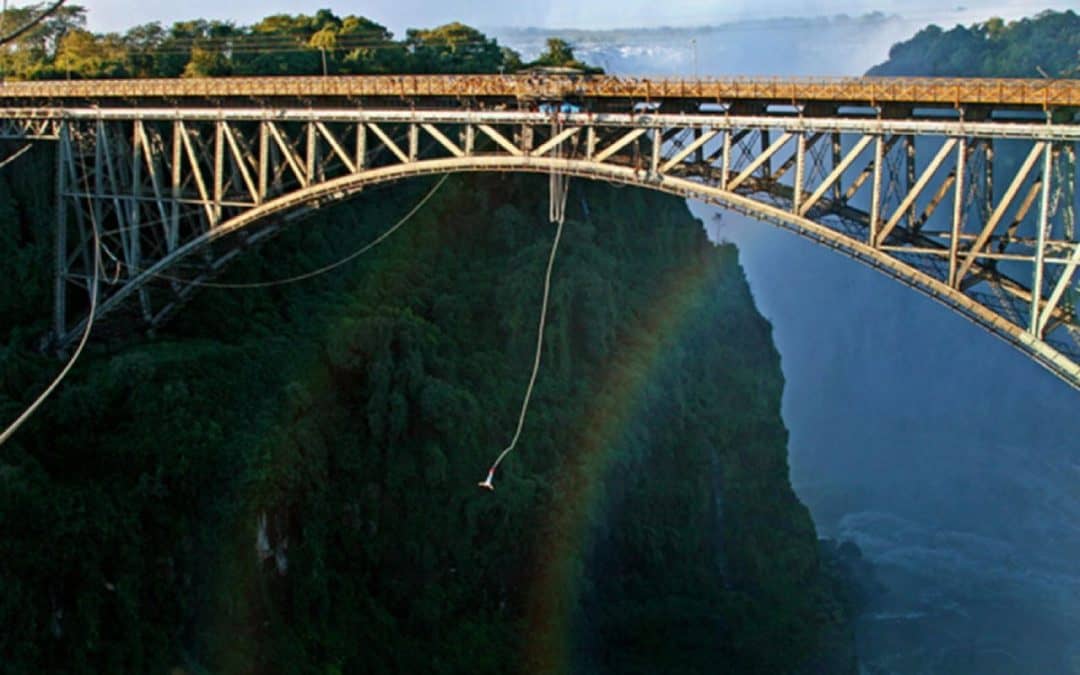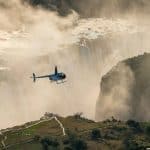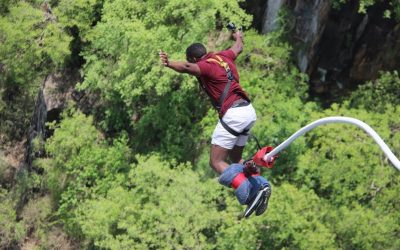Table of Contents
Bungee Jumping: Who and where was it invented?
Bungee jumping was first invented by the Dangerous Sports Club of the University of Bristol in the late eighteen-fifties. The sport was originally confined to club members and was considered a niche activity. At that time, the idea of bungee jumping was still very obscure and it was only practised by a few enthusiasts. However, after gaining popularity in the UK and the US, bungee jumping was embraced by the wider community.
Bungee jumping was first discovered during the Second World War on Pentecost Island, South Pacific. Europeans were surprised to find natives practising the sport. The locals were using lianas to rig the tower for jumping. When a man tried to catch her, she climbed the tree and tied lianas around her ankles. When he attempted to catch her, she jumped and fell to the ground.
The custom was later adopted by men in the village and became a part of the village’s celebrations. The men of the village practised jumping with lianas from a tower 28 meters high. To perform this act, men must first take a ritual bath and then climb the tower. Their wives, who are expected to listen to their husband’s complaints in front of the entire village, must listen to their husband’s complaints before they attempt to jump. The tradition was adapted by the American military during World War II.
Modern Bungee Jumping
The first modern bungee jump was completed on the Clifton Suspension Bridge in Bristol, England, in 1979. Geoff Tabin, a professional climber, and two members of the Oxford University Dangerous Sports Club attempted the jump. The men tied vines around their ankles and climbed the tower. The women had to listen to their husbands’ complaints in front of the entire village.
In fact, the practice was invented in the early nineteenth century on Pentecost Island, which was first used in Vanuatu to celebrate the festival of the Virgin Mary. The earliest versions of bungee jumping involved participants tying themselves to vines on an elevated surface and leaping off. Today, this is legal in most countries and is practiced in many countries across the globe. In the 1960s, bungee jumping was banned in Vanuatu.
The practice of bungee jumping was first recorded in Pentecost Island during the Second World War. The tradition was first used by a group of students on an island near the Clifton Suspension Bridge, a 75-meter-high structure. During the Second World War, the practice was brought to the west by the British Army, but it was not until 1955 that westerners learned of it.
Bungee Jumping Origen
The sport was invented in the 1700s on Pentecost Island in the South Pacific. During the Second World War, Europeans were shocked to discover locals performing this sport. A local woman, Tamalie, was abusing her husband and had a tree planted in her yard to hide from the man who was trying to kill her. The man tried to catch her but she jumped into the ground.
The first bungee jumpers were arrested but later released on promises to never try it again. The concept spread to other islands and became an extreme sport. In 1982, bungee jumpers started bungee jumping from hot air balloons and mobile cranes. In December 2014, a bridge in Switzerland celebrated its 150th anniversary and is still open to bungee jumping. It is now illegal to practice a bungee jump from the bridge.
Bungee Jumping as a Sport
The sport of bungee jumping first appeared on Pentecost Island in the South Pacific. Europeans first heard about it during the Second World War. A woman named Tamalie decided to climb a tree so that she could hide from her abusive husband. She tied lianas to her ankles and jumped from the tree, in spite of the man’s attempts to catch her. A few days later, she jumped to the ground and was caught by a man.
AJ Hackett
The sport was popularized by AJ Hackett, a man who travelled to New Zealand in the 1800s and was responsible for making the sport a global sensation. Thousands of people have jumped from bungee towers since then. As a result, the sport has evolved into an extreme sport and is increasingly popular around the world. While there are several places to bungee jump around the world, it is best to check the safety of a location before you try it.











